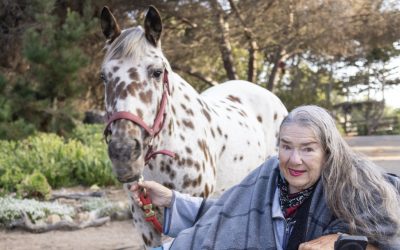A Friday in February 2004, morning and sweltering, I’d flown directly from LAX to Havana as part of a cultural program—two weeks studying Afro-Cuban rhythms at Escuela Nacional de Artes (National School of the Arts). I left Hotel Palco in the municipality of Playa and walked through a potholed alley. If it was this hot and humid at nine in the morning what would it be like by noon?
A security guard at the entrance of Escuela eyed my flimsy Permiso de Entrada pass. I fed his dog sausage snatched from the hotel buffet; thereafter, taking hard-boiled eggs for the guard himself, along with slabs of cheese and odd-looking lunchmeat for our dance teachers. A fence crowned with razor wire enclosed the campus, an exclusively whites-only country club during Batista’s dictatorship. It was possible to make out a fairway here and there, though now high-school students ruled the grounds with drums, guitars, and polished brass. A first-class arts education, tuition-free.
My classes began at 9:30 a.m. under the direction of Isaias Rojoas Ramirez, who combined a smooth, classic style with vernacular movement from the island’s barrios. A graduate of the Instituto Superior de Artes de Cuba, he was also Artistic Director of an Afro-Cuban Folkloric Dance Troupe. The studio lacked central air conditioning. A cheap fan rattled. No mirrors. The floors were cracked and peeling. The piano had been ruined by wood-rot. A woman dressed in flowery cotton kept the bathroom clean, doling out squares of rough-hewn toilet paper. I gave her hotel soap and mini bottles of shampoo.
We began our four-hour class with cha-cha-cha, blending fire and grace with the characteristic triple step that swept Cuba in the 1950s. Ramirez pressed a button on a relic boom-box and told us to listen to the music and then find the beat with claves. These short round wooden sticks were held one in each hand and struck together as a rhythmic accent. The exercise was simple enough until we were asked to keep the beat with our feet. He shouted encouragement. “Eso es! That’s it!”
After class, I ditched the scheduled group outing and on a whim flagged down an ancient Willys station wagon. Inarguably the world’s first SUV, introduced in 1946. I scrambled over a bumper held on by baling wire and settled on a handcrafted wooden bench. The only other passenger was a woman in a faded muumuu. She eyed my clunky dance sneakers over a grocery bag stuffed with carrots, eggplants, and yucca. I gave her hotel toiletries, a small gesture of friendship. Her gold-tooth grin said gracias.
The driver spoke English and let me know right away that he was a doctor. Not uncommon since doctors back then earned about $10 a week and subsidized their income by using the family car as a taxi. We passed a foreign embassy housed in a pre-revolution mansion and turned onto Avenida Quinta (Fifth Avenue). I aimed my camera at billboard after government billboard featuring national heroes: Juan Almeida, Camilo Cienfuegos, and Ché Guevara. One caption read “De estos hombres se hace un pueblo.” (“From these men came a people.”)
The driver asked if we could stop by his apartment to pick up his son for soccer practice.
“Sure,” I said.
His teenage son rode shotgun, a soccer ball in his lap. He fired questions at me about Bonds. I was confused at first, then realized he was asking about the baseball player. I admitted I hadn’t been to a major league game in eons. We talked about Madonna instead.
“I have all her CDs,” he said.
I paid the driver in pesos and set off on foot, weaving through crumbling cobblestone streets. Laundry hung from a mélange of wrought iron balconies. Shirtless men sat in white plastic chairs playing dominoes or chess. Women in tank tops and Spandex shorts painted each other’s toenails. On foot, I wasn’t just watching the scenes but in them. Reactions of people away from tourist areas were immediate. Men glanced up from beneath dented hoods of classic American cars. “Holá.” Children paused games of stickball to ask for Chiclets. I gave them crayons and coloring books.
The wind carried salsa, rhumba, and American rock-and-roll. Young children danced in doorways, poetry in their blood. I felt as if I’d stepped into the documentary Buena Vista Social Club, the sweet scene when Ibrahim Ferrer and his wife strolled similar streets greeting friends and feral dogs. I stopped a man to ask if he knew a good place to buy bongos. I didn’t like what I’d seen in the government music stores. Like most Cubans, this man had a gentle nature. He’d been at Feria Internacional del Libro de La Habana for the annual book festival held at La Cabaña, an 18th-century fortress on the eastern side of the entrance to the harbor.
He opened a book, pointing at black and white photos of Castro. I nodded. “These are great.” They weren’t really.
He smiled and thrust the thickest book at me. I understood how important it was for him to share this gift. I smiled back, “Gracias,” and shook his hand.
End of Part I. Part II will appear in next month’s issue.





